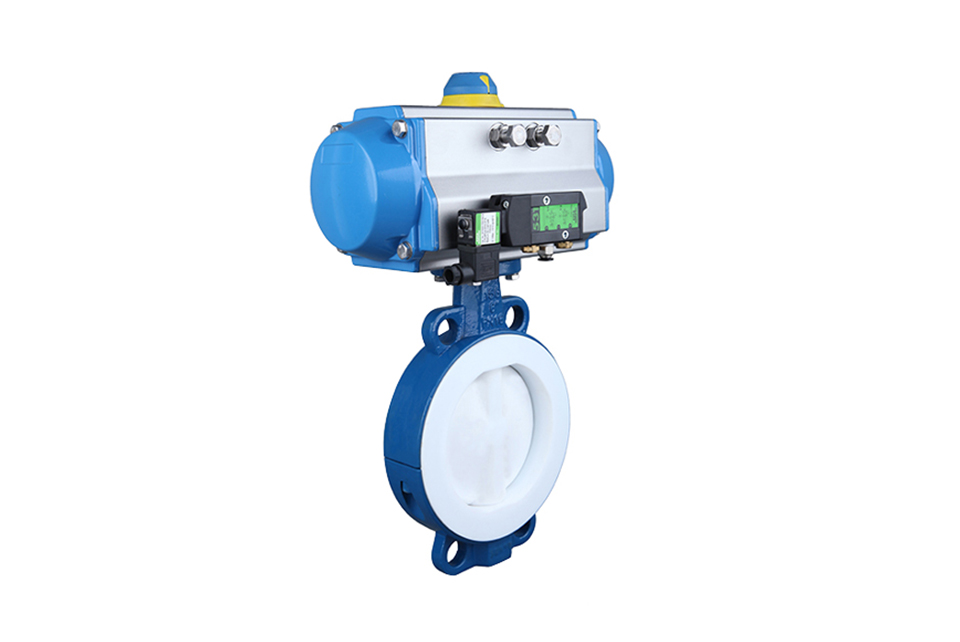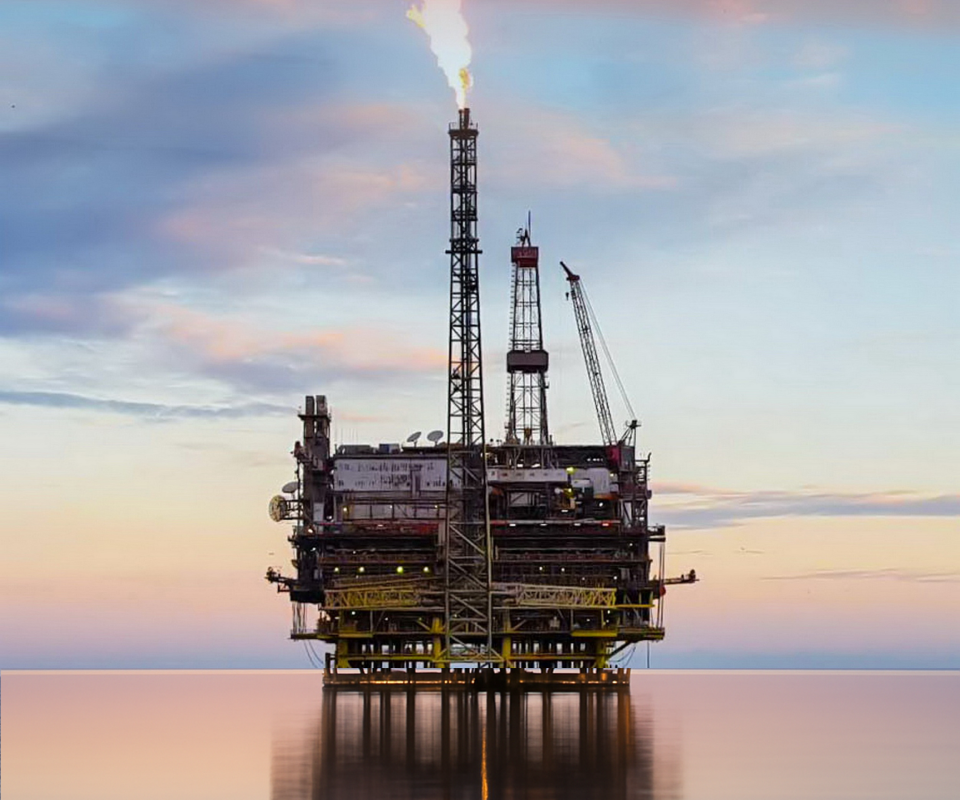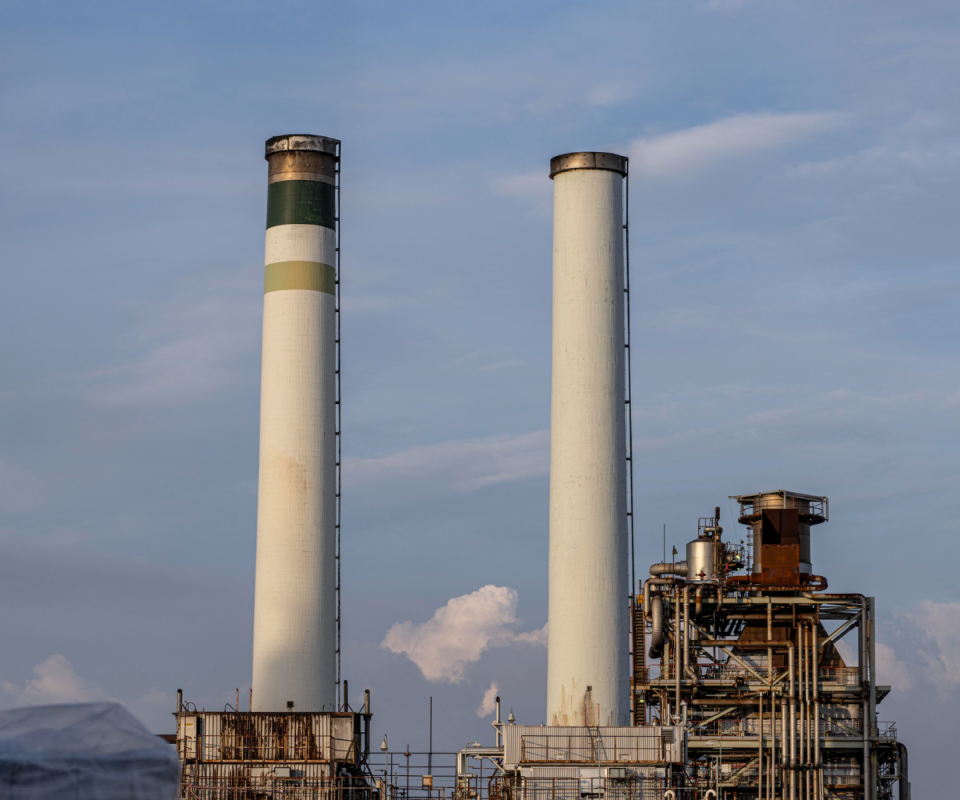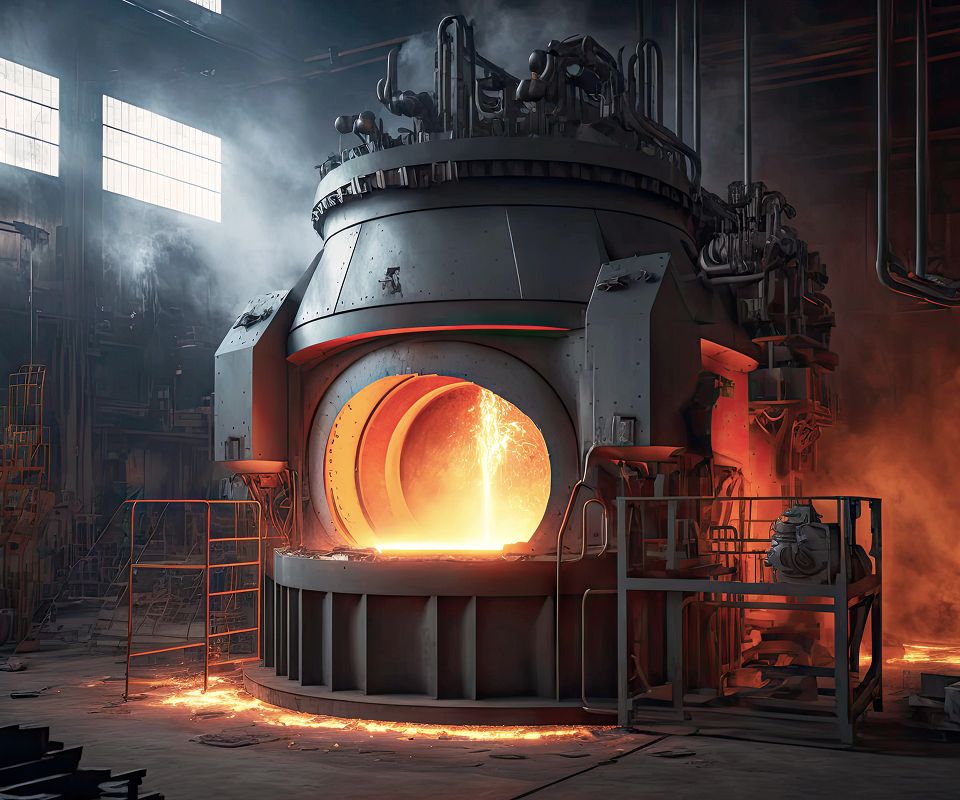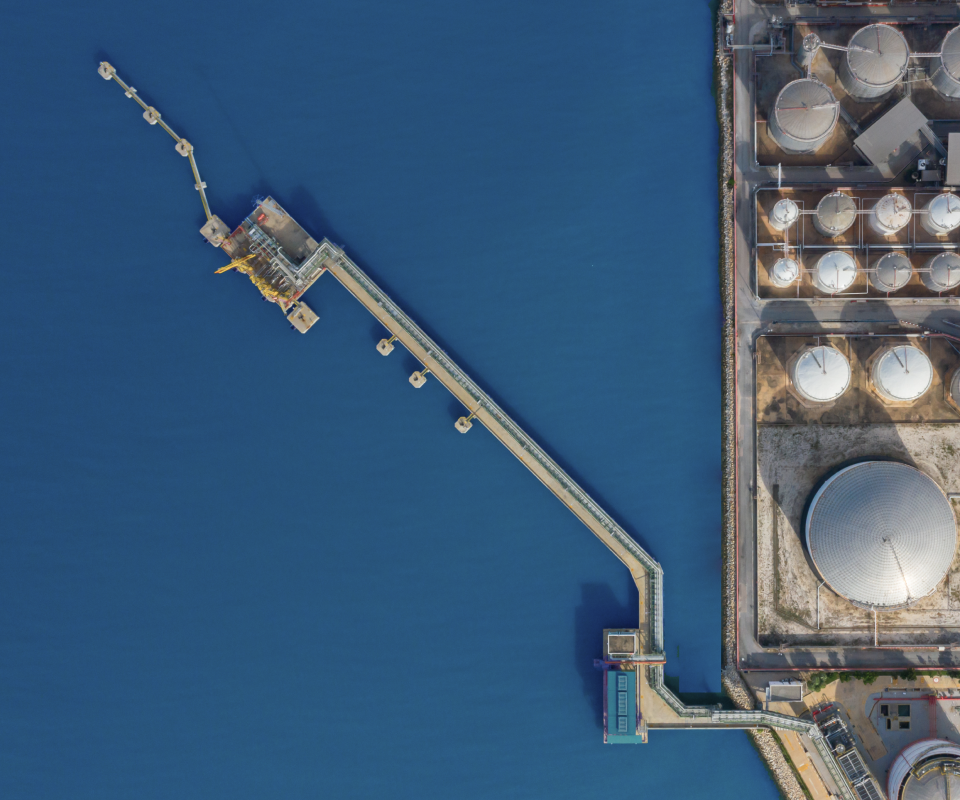Product Features
Fully lined PTFE (F4), PTFE (F3), and PTFE (F46) fluoroplastic lined butterfly valves have the advantages of corrosion resistance, no leakage, and long service life. PTFE lined pneumatic butterfly valve is suitable for concentrated sulfuric acid, hydrochloric acid, nitric acid, hydrofluoric acid, aqua regia, various organic acids, strong acids, oxidizing media or high-temperature sulfuric acid, high-temperature concentrated acetic acid, acid-base alternation, various organic solvents and other strongly corrosive media.
(1) Small and lightweight, easy to disassemble and repair, and can be installed in any position.
(2) The structure is simple and compact, with a quick 90 ° rotation opening. three
(3) Small operating torque, effortless and lightweight.
(4) The flow characteristics tend towards a straight line, with good regulation performance.
(5) Sealing materials are resistant to aging, corrosion, and can be used in various media.
Product Selection
(1) Valve body parameters: nominal diameter, working pressure, process medium, usage scenario, valve body material, and other series of parameters.
(2) Actuator parameters: actuator form, control mode, control signal (4-20mA, 1-5V), action mode (air open, air closed)
Please provide the above technical parameters as detailed as possible to facilitate our company's production and technical personnel to accurately select for you. If you have any questions You can call us and we will do our best to provide you with high-quality service!
Pneumatic Fluorine-Lined Butterfly Valve Technical Parameters
| Nominal Diameter DN (mm) | 50 - 1600 | ||
| Nominal Pressure PN (MPa) | 0.6 | 1.0 | 1.6 |
| Sealing Test (MPa) | 0.66 | 1.1 | 1.76 |
| Strength Test (MPa) | 0.9 | 1.5 | 2.4 |
| Applicable Temperature | Fluororubber: -20°C - 200°C | ||
| Applicable Medium | Water, air, natural gas, oil, and weakly corrosive fluids | ||
| Leakage Rate | Complies with GB/T13927 - 92 standard | ||
| Driving Method | Pneumatic | ||
| Configured Actuator | GT, AT, AW series single and double acting pneumatic actuators | ||
| Control Method | On - off two - position control, 4 - 20mA analog signal control | ||
Pneumatic Fluorine-Lined Butterfly Valve Actuator Parameters
| Actuator Model | GT, AT, AW series single and double acting pneumatic actuators |
| Supply Air Pressure | 0.4 - 0.7MPa |
| Air Source Interface | G1/4", G1/8", G3/8", G1/2" |
| Ambient Temperature | -30 - +70°C |
| Action Form | Single acting actuator, double acting actuator |
| Accessories | Positioner, solenoid valve, air filter regulator, position - holding valve, travel switch, valve position transmitter, handwheel mechanism, etc. |
The new series of pneumatic actuators are adopted, including double - acting and single - acting (spring return) types, with gear - rack transmission, which is safe and reliable; large - diameter valves use the series AW pneumatic actuator with fork - type transmission, featuring a reasonable structure and large output torque, including double - acting and single - acting types.
1. Gear - type double pistons, with large output torque and small volume.
2. The cylinder is made of aluminum alloy material, with light weight and beautiful appearance.
3. Manual operation mechanisms can be installed on the top and bottom.
4. The rack - type connection can adjust the opening angle and rated flow.
5. The actuator can be optionally equipped with electrical signal feedback indication and various accessories to achieve automated operation.
6. The ISO5211 standard connection provides convenience for the installation and replacement of the product.
7. The adjustment screws at both ends can make the standard product have an adjustable range of ±4° at 0° and 90°. Ensure the synchronization accuracy with the valve.
Pneumatic Fluorine-Lined Butterfly Valve Part Materials
| Part Name | Material |
|---|---|
| Valve Body | (Ductile cast steel, cast steel, stainless steel) + F46 |
| Butterfly Plate | (Gray cast iron, ductile cast steel, cast steel, stainless steel, and special materials) + F46 |
| Valve Stem | 2Cr13, stainless steel |
| Packing | O - ring, flexible graphite |
Pneumatic Fluorine-Lined Butterfly Valve Performance Specifications
| Nominal Diameter | DN (mm) | 50 - 1600 | ||
| Nominal Pressure | PN (MPa) | 0.6 | 1.0 | 1.6 |
| Test Pressure | Strength Test | 0.9 | 1.5 | 2.4 |
| Sealing Test | 0.66 | 1.1 | 1.76 | |
| Gas Sealing Test | 0.6 | 0.6 | 0.6 | |
| Applicable Medium | Various strongly corrosive media | |||
Pneumatic Fluorine-Lined Butterfly Valve Connection Dimension Diagram
| D641F46 Pneumatic Fluorine-Lined Butterfly Valve (Flange Connection) | D671F46 Pneumatic Fluorine-Lined Butterfly Valve (Wafer Connection) |
|---|
Pneumatic Fluorine-Lined Butterfly Valve Connection Dimensions
| Nominal Diameter (DN) | Main Dimensions | Flange Dimensions | |||||||||
|---|---|---|---|---|---|---|---|---|---|---|---|
| L | L1 | H | H1 | A | 1.0MPa | 1.6MPa | |||||
| D | D1 | n-Фd | D | D1 | n-Фd | ||||||
| 50 | 108 | 43 | 63 | 315 | 180 | 165 | 125 | 4 - 18 | 165 | 125 | 4 - 18 |
| 65 | 112 | 46 | 70 | 330 | 180 | 185 | 145 | 4 - 18 | 185 | 145 | 4 - 18 |
| 80 | 114 | 46 | 83 | 390 | 245 | 200 | 160 | 4 - 18 | 200 | 160 | 8 - 18 |
| 100 | 127 | 52 | 105 | 431 | 240 | 220 | 180 | 8 - 18 | 220 | 180 | 8 - 18 |
| 125 | 140 | 56 | 115 | 455 | 240 | 250 | 210 | 8 - 18 | 250 | 210 | 8 - 18 |
| 150 | 140 | 56 | 137 | 626 | 350 | 285 | 240 | 8 - 22 | 285 | 240 | 8 - 22 |
| 200 | 152 | 60 | 164 | 720 | 350 | 340 | 295 | 8 - 22 | 340 | 295 | 12 - 22 |
| 250 | 165 | 68 | 206 | 800 | 550 | 395 | 350 | 12 - 22 | 405 | 355 | 12 - 26 |
| 300 | 178 | 78 | 230 | 860 | 600 | 445 | 400 | 12 - 22 | 460 | 410 | 12 - 26 |
| 350 | 190 | 78 | 248 | 883 | 600 | 505 | 460 | 16 - 22 | 520 | 470 | 12 - 26 |
| 400 | 216 | 102 | 289 | 972 | 600 | 565 | 515 | 16 - 26 | 580 | 525 | 16 - 26 |
| 450 | 222 | 114 | 320 | 1043 | 750 | 615 | 565 | 20 - 26 | 640 | 585 | 16 - 30 |
| 500 | 229 | 127 | 342 | 1098 | 750 | 670 | 620 | 20 - 26 | 715 | 650 | 20 - 30 |
| 600 | 267 | 154 | 413 | 1236 | 750 | 780 | 725 | 20 - 30 | 840 | 770 | 20 - 33 |
| 700 | 430 | 165 | 478 | 1431 | 750 | 895 | 840 | 24 - 30 | 910 | 840 | 24 - 36 |
| 800 | 470 | 190 | 525 | 1488 | 750 | 1015 | 950 | 24 - 33 | 1025 | 950 | 24 - 39 |
| 900 | 510 | 203 | 585 | 1615 | 1250 | 1115 | 1050 | 28 - 33 | 1125 | 1050 | 28 - 39 |
| 1000 | 550 | 216 | 640 | 1765 | 1500 | 1230 | 1160 | 28 - 36 | 1255 | 1170 | 28 - 42 |
| 1200 | 630 | 254 | 755 | 1976 | 1500 | 1455 | 1380 | 32 - 39 | 1485 | 1390 | 32 - 48 |
(1) Before installation, check that the product model, tag number, and specifications match the requirements. Inspect the entire valve for missing or loose parts.
(2) Prior to installation, clean the pipeline. Ensure there is sufficient straight pipe section at the valve inlet and install a filter. When connecting the valve body to the pipeline flanges, ensure coaxiality.
(3) Thoroughly clean the pipeline before installing the valve.
(4) The installation site should ensure the safety of personnel and equipment, facilitating operation, disassembly, and maintenance.
(5) The valve should be installed vertically upright on horizontal pipelines. If necessary, it can be installed at an angle, but horizontal installation should be avoided. For occasions with heavy valve weight or vibration, use a support frame.
(6) The medium flow direction must align with the arrow on the valve body. The air supply should be dry and oil-free. The valve should be used in environments with temperatures ranging from -20℃ to 55℃.
(1) Cleaning the Valve: For general media, cleaning with water is sufficient. For media harmful to health, first understand their properties and then select an appropriate cleaning method.
(2) Disassembly: Remove rust from exposed rusted parts first. Before derusting, protect the machined surfaces of precision parts such as the valve seat, valve plug, valve stem, and push rod. Use special tools when disassembling the valve seat.
(3) Valve Seat: Minor rust or wear on the sealing surface can be repaired by machining. If damage is severe, replace the seat. However, both repaired and replaced hard sealing surfaces must be lapped.
(4) Valve Stem: If the surface is damaged, it must be replaced.
(5) Damage to Push Rod, Guide, and Sealing Surfaces: Reverse-acting actuators must be replaced; direct-acting actuators can be reused after proper repair.
(6) Compression Spring: If there are cracks or other defects affecting strength, replace it immediately.
(7) Wear Parts: Packing, gaskets, and O-rings must be replaced entirely during each maintenance. Check the valve plug and diaphragm for cracks, aging, or corrosion that may cause future failures. Decide whether to replace them based on inspection results, but the diaphragm service life should not exceed 2-3 years.
(8) When reassembling the valve, ensure alignment. Tighten bolts diagonally and lubricate sliding parts. After reassembly, debug the valve according to the factory test items and methods. During this period, accurately adjust the packing compression force and the valve plug closing position.
-
If the model has not been selected before ordering, please provide us with the operating parameters:
(1) Nominal diameter DN (mm);
(2) Nominal pressure (MPa or bar);
(3) Fluid properties (including medium temperature, viscosity, or acidity/alkalinity);
(4) Pressure before and after the valve (pressure differential);
(5) Requirements for flow characteristics;
(6) Materials of valve body and valve core;
(7) Connection type;
(8) Driving method (provide air supply pressure, driving voltage);
(9) Supporting accessories (for pneumatic valves, it is recommended that users install an air filter triplet and a 2-position 5-way solenoid valve);
(10) On-site working conditions. -
If the product model of our company has been selected by the design unit, please order directly from our production department according to the model;
-
When the application occasion is very important or the pipeline is relatively complex, please provide the design drawings and detailed parameters as much as possible, and our experts will review and check them for you.



